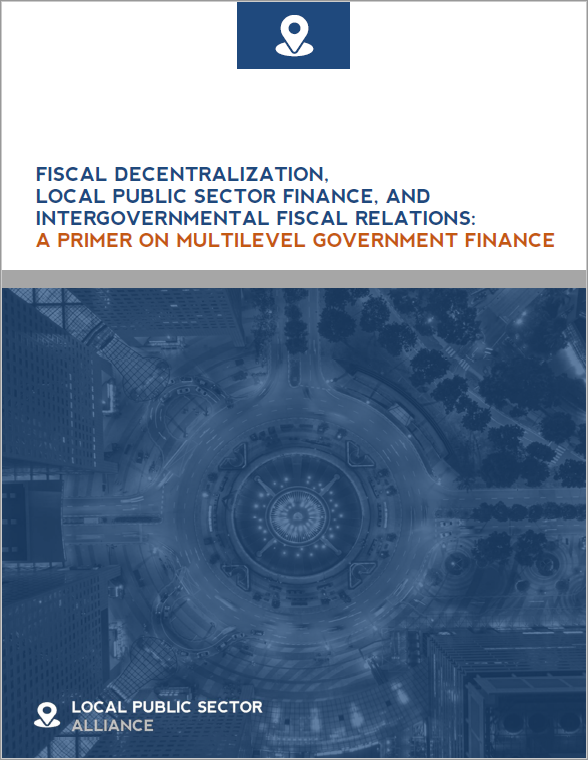The role that fiscal decentralization plays in public sector finance and public sector management around the world is evolving rapidly.
Fiscal decentralization, as part of broader decentralization reforms, has traditionally been pursued in the context of governance reforms to increase political competition and to bring the public sector closer to the people. In recent years, however, greater recognition has been given to the fact that key public services and investments, including in education, health, water and sanitation services, basic urban services, climate adaptation, and local economic development, all take place at the local level. As such, fiscal decentralization and intergovernmental finance—ensuring adequate level of financial resources for frontline services—are increasingly understood not just as part of public sector governance reforms, but rather, as a means to achieving inclusive and efficient service delivery at the local level as part of a multilevel public sector.
This paradigm shift has been accompanied by progress in the understanding of the global decentralization community of practice. While the study of fiscal decentralization has traditionally been the remit of public finance economists, the question of how best to fund the localized delivery of public services and sustainable development interventions is a matter of considerable interest to public financial management (PFM) experts and sector specialists, as well as to practitioners from a large number of other disciplines represented among policy makers and development practitioners.
This primer is one of a series to bring together the latest thinking on multilevel governance and intergovernmental finance. It is recommended to read this note together with Decentralization, Multilevel Governance and Intergovernmental Relations: A Primer (2022). These notes complement each other in providing a full picture of multilevel governance and intergovernmental fiscal architecture.
The objective of this primer on fiscal decentralization, local public sector finance, and intergovernmental fiscal relations is to:
- Present the conceptual foundations of fiscally decentralized systems and establish a common vocabulary by identifying the basic elements of fiscal decentralization and intergovernmental fiscal systems—the so-called “four pillars of fiscal decentralization.”
- Provide foundational knowledge to policy makers, policy analysts, and other stakeholders to enable them to systematically identify the technical and political economy strengths and weaknesses of an intergovernmental fiscal situation.
- Provide guidance on how to assess the institutional, physical, and organizational capacities at different levels of government.
- Identify the options and instruments available to policy makers and development partners to engage in strengthening intergovernmental finance systems.
- Signal where to find additional knowledge and resources on for further learning.
Improving public service delivery in a multilevel public sector requires bringing together a diverse set of stakeholders from across different parts of a government. As such, a solid understanding of fiscal decentralization and multilevel government finance is not only required for specialists who work on (fiscal) decentralization reforms, but also a wide range of stakeholders who want to achieve localized development impact in their respective sector or thematic area. With this in mind, this primer is written to inform the perspectives of policy makers, policy analysts, government officials, sector experts, as well as civil society actors involved in multilevel public sector reforms worldwide.

Jamie Boex, Tim Williamson, and Serdar Yilmaz. 2024. Fiscal Decentralization, Local Public Sector Finance, and Intergovernmental Fiscal Relations: A Primer on Multilevel Government Finance. Washington, DC: Local Public Sector Alliance / World Bank.
